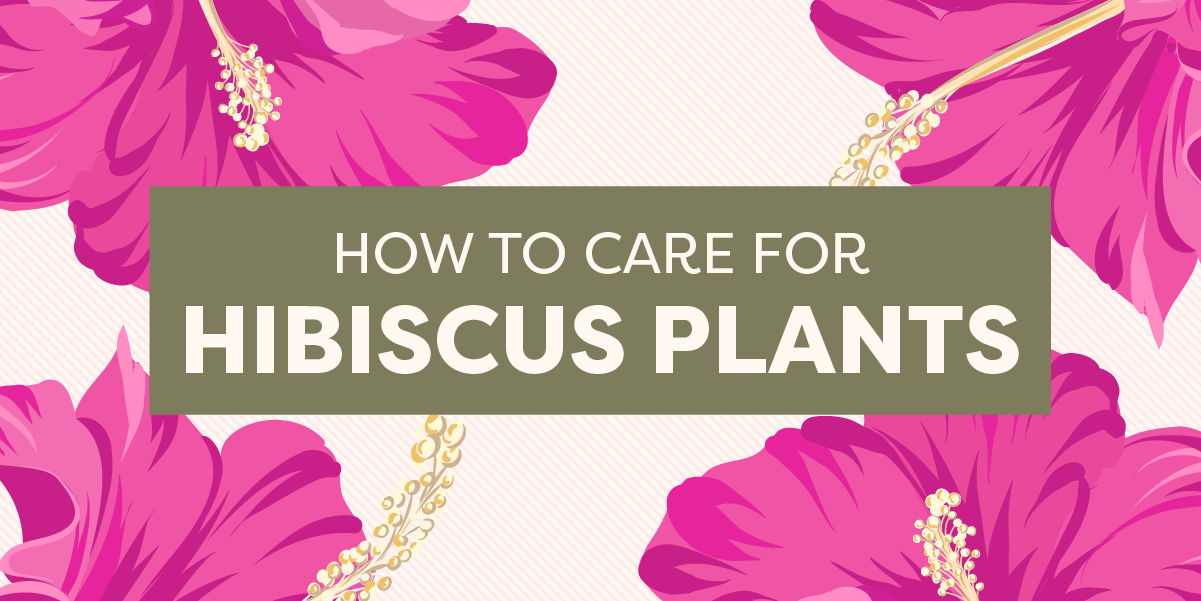The hibiscus is an elegant blooming plant whose popularity is growing, whether container cultivated around decks, porches, and patios or used in landscape settings as annual color.
While individual flowers may last only a day or so, especially in the hot summer, many new buds form daily for a spectacular flower show from spring through fall.
The Hibiscus in Europe & the USA
First classified by Linnaeus in Species Pantarum (1753) as “Hibiscus rosa-sinensis,” the hibiscus cited was probably the double red, which was common throughout China, India, South-East Asia, and the Pacific Islands.
While the double red had been known since the 1600s, only after Linnaeus made his first observations did a single red form of the hibiscus appear in written descriptions. Singles were considered rare during these early days until they were introduced into Europe from the South Indian Ocean.
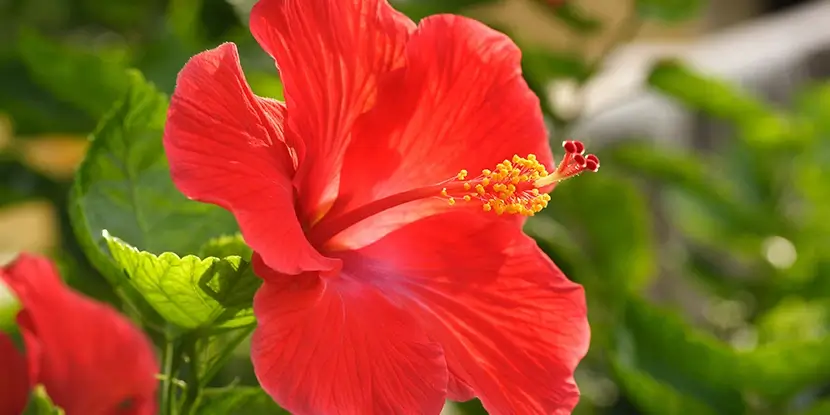
The large, brilliant petals and prominent stigma of a hibiscus flower.
By the 19th century, the hibiscus had made its way into European greenhouses, as other forms were discovered and early hibiscus gardeners made cultivars. Most early forms originated in Asia and the South Pacific.
Still, as early as 1820, Charles Telfair began crossing the Mauritius island native Hibiscus Liliiflorus with older forms of Hibiscus rosa-sinensis. By 1900, hybridizing had begun in Hawaii, India, Ceylon, Fiji, and Florida.
Gardeners can now choose from hundreds of hibiscus varieties, with more varieties introduced yearly. The glossy green hibiscus foliage varies considerably in size and texture, and the flower’s colors seemingly have no limits.
We have brown, green, gray, and maroon hibiscus, as well as violet, red, orange, yellow and pink, and white. Many hibiscus have multi-color combinations. Size ranges from 2- to 3-inch miniatures to the dinner plate size of the mallow or Hibiscus Moscheutos varieties.
One of the drawbacks of hibiscus in arrangements is that the flowers last only one day, especially during the summer. Nevertheless, hibiscus remains popular for decoration since flowers needn’t be placed in water to prevent wilting.
For an evening party, try this tip: Pick hibiscus blooms in the morning, just as they are opening, and place them in a sealed plastic bag. Refrigerate them until one or two hours before displaying them. Then remove them from the bag and let them open on their own. Now they’ll last all evening!
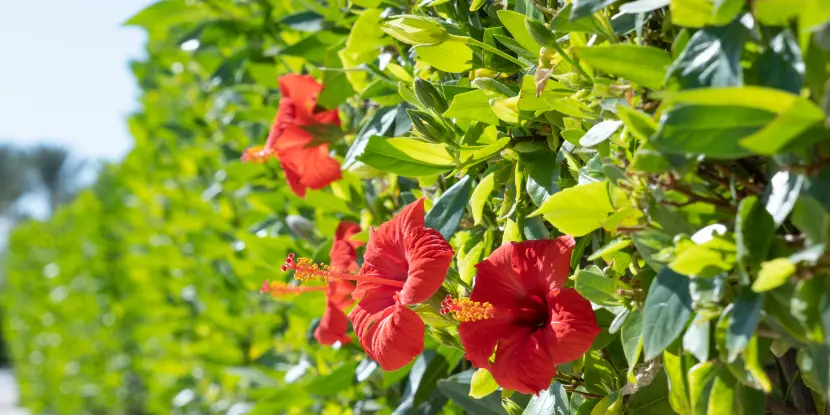
Hibiscus shrubs can be pruned into hedges.
Fertilizing Hibiscus
A healthy, well-fertilized plant is more resistant to insects and diseases. Growers who take good care of their hibiscus experience few problems. Feed your hibiscus according to the label instructions of the fertilizer you select.
Hibiscus fertilizer is formulated with all the plant food elements for successful cultivation. The low phosphate content provides enough phosphorus for bloom, but doesn’t have the excess phosphorus that would tie up trace elements like magnesium. The potassium is derived from the nitrate of potash, which lacks the chlorides harmful to hibiscus.
Be aware of your fertilizer ingredients. Most general fertilizers use the less expensive muriate of potash, which is high in chlorides. Proper fertilizer is essential to container-grown hibiscus, as fluids move through the confined soil mix and aren’t dissipated.
Feed your plant when it is dry or just moist. Always water the plant first, then fertilize. Water again if you apply dry fertilizer. It’s best to feed plants at cooler times of the day. Morning is ideal. Remember, the more you water in hot weather, the more you may have to fertilize.
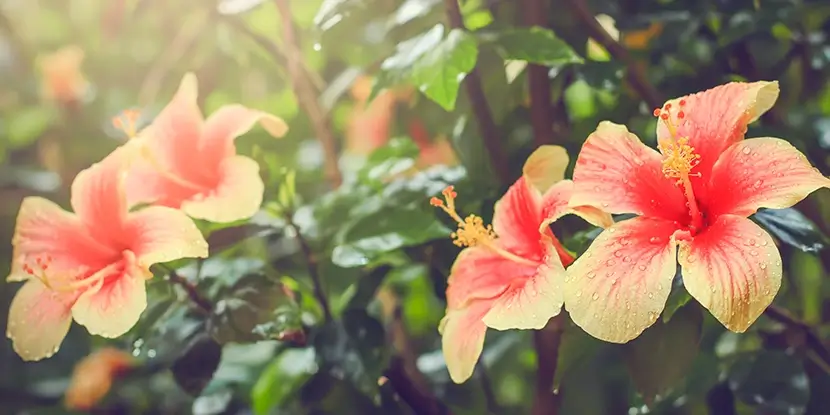
Multi-colored hibiscus flowers in a garden.
Insects & Disease
With its lush tropical foliage, hibiscus in your yard can offer a tempting meal for hungry insects. To control cabbage loopers, cutworms and other worms, use a bacterial insecticide. For aphids, whiteflies, scales, mealy bugs, and thrips, use a systemic insecticide that moves up the plant to control pests on both foliage and flowers. If you’re not sure what type of insects you have, take a sample (or photo) to your local Anawalt Garden Center for proper identification.
For fungal problems, use a fungicide according to label instructions. Botrytis is the most common disease, and it shows up as grey fuzzy spots on flowers and foliage. Some hibiscus varieties are more resistant than others to diseases.
Pruning Hibiscus
Hibiscus responds well to pruning, especially during the mild winter months in Southern California. The pruning technique depends on your hibiscus size and where it’s planted. For a large shrub, trim only one-third of the growth each year, cutting just above an outward-facing bud. You can prune smaller hibiscus back more severely, as the plant will reward you with vigorous new growth.
Prune light and often, rather than drastically cutting back a plant all at once. If you’re unsure of your skills or the size of pruning needed, talk to your Anawalt Garden Center professional.
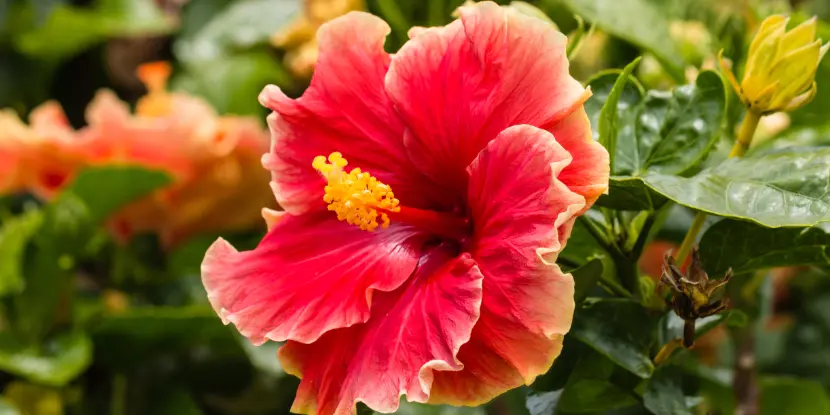
A red hibiscus flower in full bloom.
Protection Against Frost
Cover your hibiscus plants when temperatures are expected to drop below 32 degrees or when there is a danger of frost.
Hibiscus planted in the ground: Before the first freeze, cut the hibiscus bush back to 4 to 6 inches above ground level. Cover hibiscus completely with pine needle mulch to give your plants a chance to survive a mild winter. In the spring, after the danger of freezing has passed, rake mulch away from the trunk to allow plants to sprout freely.
Containerized hibiscus: Prune to shape in late January or February to assure ample spring blooms, as hibiscus blooms on new wood. Prune to shape or control the size of the plant at any time.
Plant Your Hibiscus Right!
Plant your hibiscus in a sunny location (at least 6 hours per day). Prepare the bed for good drainage. Blend approximately 14 bags of azalea planting mix per 100 sq ft of existing soil. Add the appropriate amount (according to instructions) of hibiscus fertilizer. A pre-emergent herbicide will prevent most weeds from germinating, and pine bark mulch will insulate the roots, retain moisture, and also help control weeds.
Hibiscus planted in a raised bed
If planting hibiscus in a pot, we recommend a container at least 14 inches in diameter, with holes in the bottom for drainage. Use cracked pottery to cover the hole, but still allow adequate water drainage. Fill with blooming tropical soil mix blended with the appropriate amount of hibiscus fertilizer.
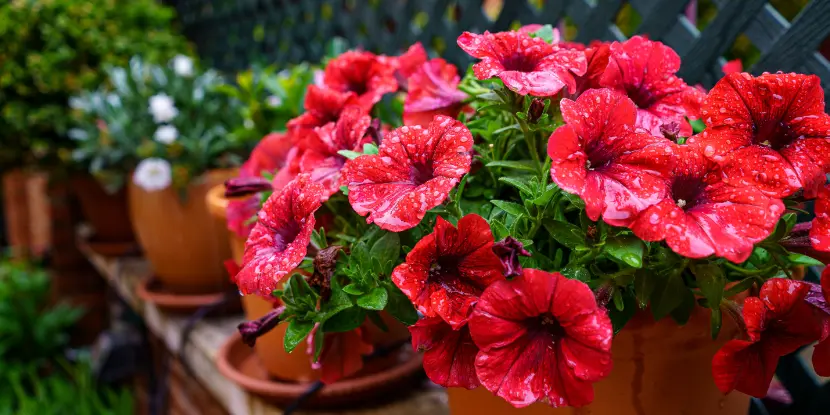
Potted flowering hibiscus plants.
Hibiscus planted in a pot
Fertilize every 2 to 4 weeks with hibiscus fertilizer. Hibiscus prefers moist soil when growing; for the best bloom production, use warm (not cold) water to irrigate your plant.
Monitor your hibiscus for signs of nutrient deficiency or overwatering. Yellow foliage and wilting stems are likely signs of an underlying problem. If you’re concerned, ask an Anawalt Garden Center professional for advice. With the right care and attention, your hibiscus can thrive and provide beautiful blooms throughout the growing season.
FAQs : How to Care for Hibiscus Plants
Q: How frequently should I water my hibiscus plants?
During summer, water them thoroughly 2-3 times a week, ensuring the soil remains moist but not soggy. In the cooler months, reduce watering to once a week, and always check the soil before adding more water.
Q: Do hibiscus plants need a lot of sun to thrive?
Hibiscus plants need at least 5 hours of direct sunlight daily to produce vibrant blooms. However, some afternoon shade will protect them from excessive stress during the peak summer heat.
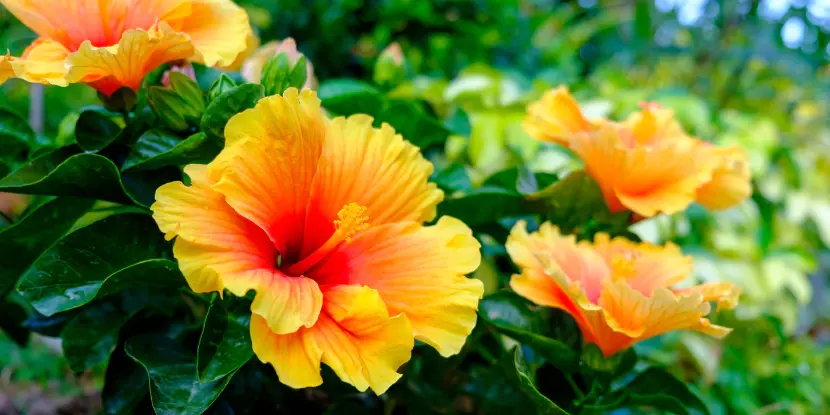
Brilliant yellow-orange Hawaiian hibiscus flowers in the garden.
Q: What kind of fertilizer do you recommend for hibiscus, and how often should it be applied?
Use a high-potassium fertilizer to encourage blooming and healthy growth. Apply a slow-release fertilizer every few months during the growing season or according to the instructions on the fertilizer’s packaging.
Q: When is the perfect time to plant hibiscus in Southern California?
Aim for the late spring or early fall, when temperatures are mild. This allows the plants to establish themselves without the stress of extreme heat.
Q: Do I need to prune hibiscus plants, and what is the best time to do it?
Pruning helps maintain the shape of hibiscus plants and encourages more prolific blooming. Do it in late winter or early spring, just before the new growth begins. Remove any dead or weak branches to promote healthier, more vigorous plants.
Q: How can I protect hibiscus from pests?
Regularly inspect your plants for common pests like aphids, spider mites, and whiteflies. You can use a gentle insecticidal soap or neem oil solution to treat infestations. Also, maintaining healthy plants through proper watering, lighting, and fertilization reduces the likelihood of pest problems.
Q: Can I mulch around my hibiscus plants, and what type should I use?
Mulching helps retain soil moisture and prevents weeds. Apply an organic mulch, like shredded bark or cocoa bean husks, which will enrich the soil as it decomposes. Apply a 2-3 inch layer around the base of the plants, being careful to avoid direct contact with the stems.
Q: What are the signs of overwatering Hibiscus?
Signs of overwatering include yellowing leaves, leaf drop, and root rot. If you notice these symptoms, reduce watering and ensure the soil dries thoroughly between watering sessions. Improve soil drainage and repot the plant into fresh, well-drained soil if the problem persists.
Q: What temperature range is ideal for hibiscus growth in Southern California?
Hibiscus plants thrive in temperatures ranging from 60°F to 90°F. They can endure the occasional dip below this range, but prolonged exposure to cold will harm them. If temperatures are expected to fall sharply, provide protection or move potted plants to a warmer location.
Q: How can I enhance the blooming of my hibiscus plants?
Provide your hibiscus with ample sunlight, proper fertilization, and consistent watering. Pruning old blooms can also encourage the plant to produce new flowers. Make sure potted plants aren’t root-bound, as this can limit their blooming potential.

